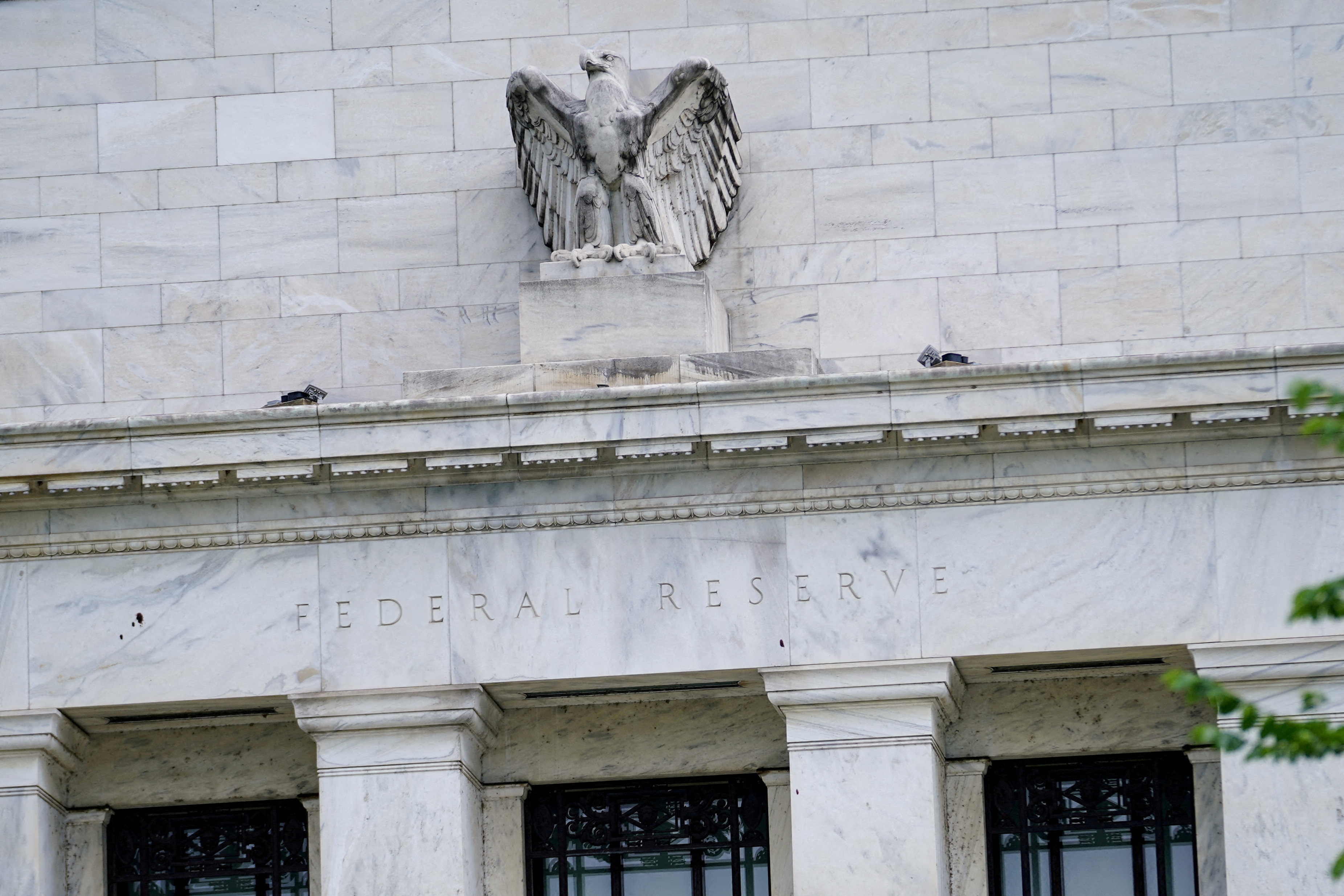pctay123
Publish Date: Tue, 17 Sep 2024, 10:02 AM

- U.S. rate futures price in 59% chance of Sept rate cut
- Risk of deep easing cycle persists
- Tight corporate bond spreads suggest soft-landing view
- Hard landers point to worsening labor market trend
NEW YORK, Sept 17 (Reuters) - Bond investors are more cautious and divided over prospects for recession in the world's largest economy with the Federal Reserve poised to cut interest rates on Wednesday for the first time in more than four years.
Proponents of a soft-landing scenario said recent weak U.S. data does not suggest the economy is falling off a cliff and might not even point to recession. Some hard landing believers, on the other hand, cited worrisome trends in the jobs market that could push the economy into a deep downturn and force the Fed to aggressively slash rates.
It's an uneven landscape for the Fed to navigate as it embarks on its easing cycle, analysts said. At the end of its two-day policy meeting starting on Tuesday, the Fed is widely expected to reduce its benchmark overnight rate, which has been in a 5.25%-5.50% target range since last July.
Predictions for the size of the reduction have swung between 50 and 25 basis points (bps) for months. On Monday, U.S. rate futures have settled on a 59% chance of a supersized 50-bps cut and a 41% probability of 25 bps, according to LSEG calculations. For 2024, the futures market is implying about 122 bps in cuts and roughly 250 bps of easing by September next year.
Former New York Fed President William Dudley pushed for a 50-bp cut on Monday in an opinion piece on Bloomberg News, saying rates on the front end of the curve remain far above neutral, after last week making the case in a forum in Singapore.
"There's a disconnect between the bond market and the Fed," said Byron Anderson, head of fixed income at Laffer Tengler Investments in Scottsdale, Arizona. "The market is definitely more bearish than the Fed. But somebody is going to be wrong."
Investors will also focus on the Fed's quarterly economic projections, including rate expectations, referred to as the "dot plot," which signals how much easing central bankers expect. The Fed "dots" in June were consistent with cuts of about 125 bps in 2024 and 2025 in a soft landing outcome.
Those "dots" could be dialed back, although portfolio managers also noted the risk of a more aggressive Fed.
Noah Wise, senior portfolio manager for the Plus Fixed Income team at Allspring Global Investments, believes the Fed will be able to engineer a soft landing and expects the neutral rate to fall to no lower than 3%.
"We have seen in the last couple of days that the CPI (consumer price index) and PPI (producer price index) prints were largely in line with expectations," Wise said. "The data doesn't support a 50 basis-point cut. These are not emergency economic situations."

SOFT LANDING TRADES, CORPORATE BONDS
Having a soft landing outlook means shortening duration in a bond portfolio, investors said, meaning sticking to the front end of the curve. Short-duration strategies tend to outperform long duration bets when rate-cutting cycles coincide with soft landings.
Bond investors all year had been extending duration, or buying longer-dated assets, as they braced for Fed easing and possible recession. As the economy slows, longer-dated notes or bonds tend to outshine other assets.
"It's time to reduce duration," said Laffer Tengler's Anderson, who is also in the soft-landing camp. "We're going to stay on the short end...and take advantage of three-month Treasuries that are still yielding close to 5%...and we will keep rolling short."
Tight U.S. corporate credit spreads, the premia over Treasuries companies pay for debt, in both investment grade and high-yield markets also indicate a soft landing outlook for many bond investors, analysts said.
The ICE BofA U.S. Investment Grade Corporate Bond Index (.MERC0A0) , opens new tab showed an option-adjusted spread of just 99 bps last Friday. At the height of the pandemic in March 2020, that spread reached 382 bps.
The ICE BofA U.S. High Yield Corporate Bond Index (.MERH0A0) , opens new tab was similarly benign at 337 bps last Friday, compared to the 1,009 bps it hit early in the pandemic.
Current spreads signify that there is minimal risk premium built into corporate credit valuations and are further evidence bond investors are not worried about a U.S. hard landing, Allspring's Wise pointed out.
However, Chris Diaz, co-head of fixed income at Brown Advisory in Chicago, believes that while U.S. corporate bonds are "priced for perfection," it is just a small slice of the whole economy.
He believes the 250 bps of rate cuts factored through 2025 are justified, citing a deteriorating labor market in which only non-cyclical jobs such as government, healthcare, and education are growing.
"If the trajectory continues," Diaz said, "it's not going to be long before we're looking at monthly job losses."
Diaz said a hard-landing view has been reflected in "steepener" trades that are bullish on short-dated Treasuries and bearish on the long end. In a steepener, yields on longer-dated Treasuries are higher than short-term maturities, a trade investors make when the Fed is cutting rates.
The widely tracked U.S. two-year and 10-year yield curve, after being inverted for more than two years, has been steepening. It hit 10 bps on Monday , the steepest since July 2022.
"There has been a significant steepening of the yield curve of late," Diaz said. "It has been helpful for outperformance (in the bond portfolio). But we're still in the early stages of that steepening so there is a lot further to run."

Sign up here.
https://www.reuters.com/markets/rates-bonds/bond-investors-debate-recession-risks-with-fed-easing-finally-hand-2024-09-17/












